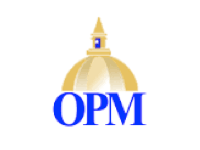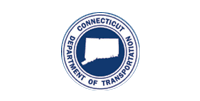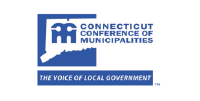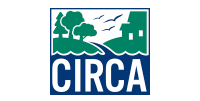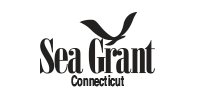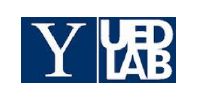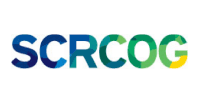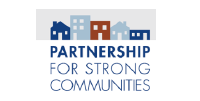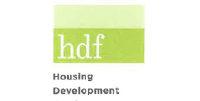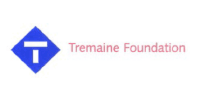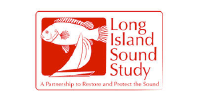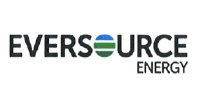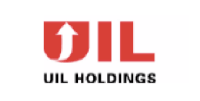Phase I Partners
The Applicant, the State of Connecticut’s Department of Housing (DOH), is working with the State Agencies for Resilience (SAFR, pronounced safer) to address these risks and prepare and implement the NDRC proposal. SAFR includes representatives from eight state agencies. SAFR is supported by 19 additional partners including the regional Councils of Government, Connecticut Conference of Municipalities, University of Connecticut, Yale, Partnership for Strong Communities, Housing Development Fund, Connecticut Green Bank, the state’s largest utility companies, several environmental organizations, The Red Cross, CT Rises, and the Tremaine Foundation.
All Partners have incorporated resilience to the impacts of severe weather, sea level rise and climate change into their core mission or programs.
|
CT Department of Housing strengthens and revitalizes communities by promoting affordable housing opportunities and has significant experience working on civil rights and fair housing issues. DOH seeks to eliminate homelessness and to catalyze the creation and preservation of quality, affordable housing to meet the needs of all individuals and families. Major initiatives include the Governor’s $300 million, 10-year capital investment in State-sponsored Housing Portfolio and the Sandy CDBG-DR program, which includes data analysis of racial or economic disparities in its Action Plan. |
|
CT Office of Policy and Management (OPM) is a co-chair of SAFR. OPM functions as the Governor’s staff agency and plays a central role in state government, providing the information and analysis used to formulate public policy and assisting state agencies and municipalities in implementing policy decisions on the Governor’s behalf. OPM is the coordinator of interagency problem-solving efforts, including Transit-Oriented Development, and is the liaison between municipal and state government for this application. |
|
The CT Department of Energy and Environmental Protection (DEEP) is a co-chair of SAFR. DEEP’s mission is to conserve, improve, and protect natural resources and the environment as well as to ensure availability of affordable, clean and reliable energy. DEEP brings its experience co-leading CIRCA, implementing the Coastal Zone Management program, which includes permitting structures for shoreline adaptation, administering CT’s Clean Water Fund, developing energy, climate and resilience policy, and running the Floodplain Management and the NFIP. |
|
The Office of the Governor (OTG) ensures coordination between concepts proposed in the application and gubernatorial priorities, including a focus on State-sponsored housing revitalization and a “best-in-class transportation system”. |
|
CT Department of Transportation (DOT) strives to provide a safe and efficient intermodal transportation network that improves the quality of life and promotes economic vitality. DOT’s $1.7 billion annual budget (2015) supports many highway, bridge, rail, bus, water, bicycle, and pedestrian capital assets and operations, including many of which are adjacent to waterways and vulnerable to flooding. DOT brings a wealth of experience on Transit-Oriented Development; “Complete Streets” designs; Public-Private Partnerships, Design-Build projects; alternative design concepts; procurement processes; and transportation asset management. |
|
The CT Department of Emergency Services and Public Protection, Division of Emergency Management and Homeland Security (DESPP/DEMHS) advises SAFR on emergency management and homeland security programs that encompass all human-made and natural hazards, including prevention, mitigation, preparedness, response, and recovery components to ensure the safety and well-being of citizens. This includes administering FEMA’s Hazard Mitigation Assistance grant programs and Public Assistance Programs and incorporating climate change risks into the Threat Hazard Identification and Risk Assessment, State Preparedness Report and Connecticut’s State Hazard Mitigation Plan Update. |
|
The Department of Public Health's (DPH) vision is for healthy people in healthy Connecticut communities and is charged with protecting and improving the health and safety of the people of Connecticut. The DPH advocates health impact assessments (HIA) be conducted where possible to ensure conditions in which people can be healthy. |
|
Connecticut Insurance Department (CID) provides assistance and information to the public and to policy makers and regulates the insurance industry. Connecticut is one of only a few states to request voluntary climate change disclosure surveys from insurance companies. CID advises SAFR on the impacts of mitigation strategies and policies on insurance in the state and provided key contacts with stakeholders from the insurance and reinsurance industries. |
|
The Connecticut Conference of Municipalities (CCM) is the state’s association of towns and cities. CCM brings community engagement and regional policy and planning experience to assist SAFR. |
|
The CT Department of Economic and Community Development (DECD) advises SAFR on comprehensive approaches to economic development and revitalization that incorporate community development, transportation, and productive redevelopment of brownfield properties by promoting smart growth principles and strengthening public-private partnerships. |
|
UConn Connecticut Institute for Resilience and Climate Adaptation (CIRCA) fosters resilience of vulnerable communities along the state’s coast and rivers to the impacts of climate change through transferable and replicable adaptation solutions. CIRCA’s technical capacity for science-based analysis includes: impacts of climate change, sea level rise, ocean dynamics, future precipitation and hydrology models, weather prediction, environmental law, economics and policy analysis. CIRCA’s faculty contribute to the National Climate Assessment and advise state, national and international bodies on climate change. |
|
CT Sea Grant is the state’s component of the NOAA national Sea Grant network and has expertise in research and outreach including the Climate Adaptation Academy workshops and the NOAA Sea Grant Coastal Storm Awareness Program. |
|
UConn Center for Land Use Education and Research (CLEAR) provides information and assistance to land use decision makers to balance growth and natural resource protection. |
|
Yale Urban Ecology and Design Laboratory (UEDLAB) provides landscape architecture expertise. The UEDLAB was a member of the Resilient Bridgeport Rebuild by Design team and has contributed to green infrastructure and coastal planning projects in Connecticut. |
|
The Regional Councils of Government (COGs) serve the vital role of regional planning, as Connecticut does not have county governments. The South Central Regional COG (SCRCOG), Western Connecticut COG (WCCOG), and Greater Bridgeport Regional Council (GBRC), facilitate regional initiatives and represent all municipalities in our MID-URN counties. |
|
Partnership for Strong Communities is a statewide housing policy organization that works to prevent and end homelessness, create affordable and mixed-income housing (including in communities that have little or none) and foster community development solutions. |
|
The Housing Development Fund, Inc. is a nonprofit organization dedicated to financing the development of affordable housing and will work with SAFR to apply lessons learned from existing lending programs including Shore Up CT, the state’s resiliency loan fund. HDF in partnership with Yale is conducting an analysis of housing needs in 80 low-income census tracts, which will assist in the analysis of unmet needs in the target area. |
|
The Emily Hall Tremaine Foundation has been a key funder of state-level climate and energy initiatives in Connecticut, including the State’s Climate Action Plan, and is looking to fund resiliency innovations at the community scale. In addition, the foundation will utilize its national funder affinity group involvement to raise the visibility of Connecticut’s efforts. |
|
The Long Term Recovery Committee for the State of Connecticut will help coordinate through its participation in a number of joint working groups related to coastal resilience. |
|
Connecticut Chapter of the American Red Cross and CT Rises have been extensively involved in Sandy recovery efforts in Connecticut and will provide vital insight into unmet need not identified through government channels. |
|
EPA Long Island Sound Study, Save the Sound, and Audubon Connecticut will provide guidance on coastal adaptation measures, wildlife protection, and conservation opportunities. |
|
Connecticut Green Bank, the nation’s first state green bank, leverages public and private capital to drive investment and scale-up of clean energy and energy efficiency in Connecticut. Their staff will provide important expertise on potential financing mechanisms for projects. |
|
East Coast Greenway Alliance is developing a public trails network in the target counties as part of a 2,900-mile system of paths, to connect communities from Maine to Florida. |
|
UIL Holdings and Eversource Energy serve most electric and natural gas customers in the state and will work closely with SAFR to coordinate electric and gas infrastructure modifications to support the designed project and further enhance critical infrastructure resiliency. |


